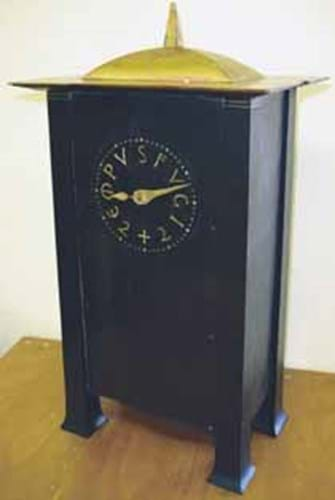
Offered as part of the contents of a bungalow in a house sale on site in Winslow, the clock was pictured in the September 18 sale's Antiques Trade Gazette advertisment two weeks ago.
As a result, at least some bidders had realised its significance and on the day there were nine phone lines on the go with four bidders in the room competing for it.
So why was it so special? Far from being by Knox, the ebony-cased, single fusee mantel timepiece - with gilded mahogany pagoda-type top over a base standing on four ivory inlaid ebony squared legs - is actually a celebrated design by Charles Voysey. Instead of a numerical dial, the face displays the legend Tempus Fugit +.
While similar examples have been known in oak and aluminium, and the V&A has a painted version, this is the only one known to have been made in these particular materials.
The vendor's father bought the clock, complete with bakelite cover - which concealed a vertical crack that ran from top to bottom - in 1920. Considering the damage (the hands were also replacements made by the vendor), the auctioneer initially expected it to make £3000-6000. After the interest shown, however, the night before the sale he thought "with the wind behind us" it might stretch as far as £20,000.
In the event, however, a mix of dealers and private bidders pursued it all the way to £72,000 (plus 15/12 per cent premium) when the hammer fell to a member of the London trade.
"All the best things come out of bungalows," concluded Mr Dickins.




